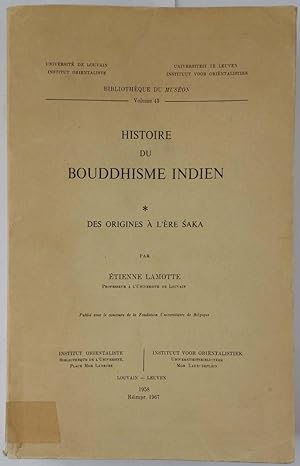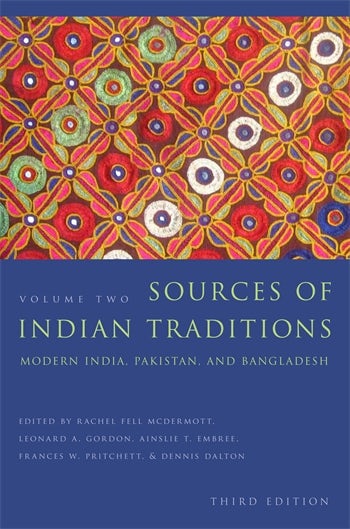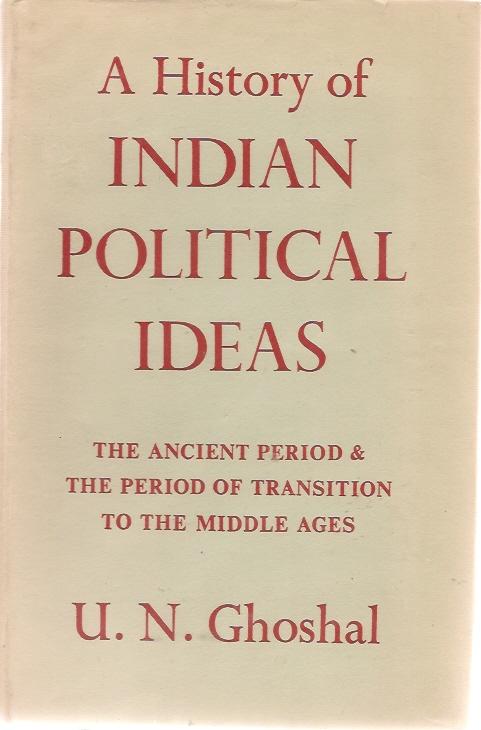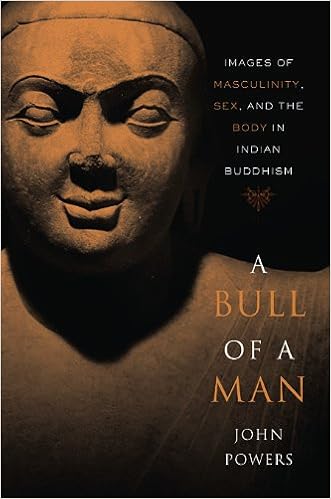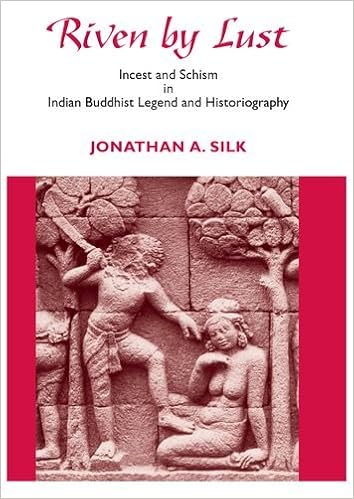Buddhism: Theravada: Early & Indian Buddhism

Early & Indian Buddhism

Discover the birth of Buddhism and the essentials of Buddhist teachings with this clear, comprehensive explanation of early Buddhism’s key doctrines. You’ll come away with: insight into the beginning of Buddhism and the significance of its core beliefs—dependent arising, non-self, moral life, the diagnosis of the human condition, the critique of theoretical views, and the nature of Nibbana; a lucid understanding of the Buddha’s challenge to the concept of the subject as a self-entity and the reality of both the subject and object, perceiver and perceived, as a dynamic process; a grasp of early Buddhist teachings as representing a middle position (equally aloof from spiritual eternalism and materialist annihilation) and a middle path (equally aloof from self-mortification and sensual indulgence); and the experience of the Buddha’s teachings on attaining liberation as comprehensible, sensible, and something we can make part of our own practice.
"This book is the result of rigorous textual scholarship that can be valued not only by the academic community, but also by Buddhist practitioners. This book serves as an important bridge between those who wish to learn about Buddhist thought and practice and those who wish to learn from it." —The 17th Karmapa Ogyen Trinley Dorje. "In this study, Venerable Analayo brings a meticulous textual analysis of Pali texts, the Chinese Agamas and related material from Sanskrit and Tibetan to the foundational topics of compassion and emptiness. While his analysis is grounded in a scholarly approach, he has written this study as a helpful guide for meditation practice."—Jetsunma Tenzin Palmo.
This careful analysis of early Buddhist thought opens out a perspective in which no permanent Self is accepted, but a rich analysis of changing and potent mental processes is developed. It explores issues relating to the not-Self teaching: self-development, moral responsibility, the between-lives period, and the 'undetermined questions' on the world, on the 'life principle' and on the liberated one after death. It examines the 'person' as a flowing continuity centred on consciousness or discernment (vinnana) configured in changing minds-sets (cittas). The resting state of this is seen as 'brightly shining' - like the 'Buddha nature' of Mahayana thought - so as to represent the potential for Nirvana. Nirvana is then shown to be a state in which consciousness transcends all objects, and thus participates in a timeless, unconditioned realm.
Ronkin's Early Buddhist Metaphysics provides a philosophical account of the major doctrinal shift in the history of early Theravada tradition in India: the transition from the earliest stratum of Buddhist thought to the systematic and allegedly scholastic philosophy of the Pali Abhidhamma movement. Entwining comparative philosophy and Buddhology, the author probes the Abhidhamma's metaphysical transition in terms of the Aristotelian tradition and vis-à-vis modern philosophy, exploits Western philosophical literature from Plato to contemporary texts in the fields of philosophy of mind and cultural criticism.
In the years following Alexander the Great’s conquest of the East, a series of empires rose up along the Silk Road. In what is now northern Pakistan, the civilizations in the region called Gandhara became increasingly important centers for the development of Buddhism, reaching their apex under King Kaniska of the Kusanas in the second century CE. Gandhara has long been known for its Greek-Indian synthesis in architecture and statuary, but until about twenty years ago, almost nothing was known about its literature. The insights provided by manuscripts unearthed over the last few decades show that Gandhara was indeed a vital link in the early development of Buddhism, instrumental in both the transmission of Buddhism to China and the rise of the Mahayana tradition.
This introductory work proposes a fresh take on the ancient Indian concept dharma. By unfolding how, even in its developments as "law" and custom, dharma participates in nuanced and multifarious understandings of the term that play out in India’s great spiritual traditions, the book offers insights into the innovative character of both Hindu and Buddhist usages of the concept. Alf Hiltebeitel, in an original approach to early Buddhist usages, explores how the Buddhist canon brought out different meanings of dharma. This is followed by an exposition of the hypothesis that most, if not all, of the Hindu law books flowered after the third-century BC emperor Asoka, a Buddhist, made dharma the guiding principle of an entire realm and culture. The book argues that dharma challenges people to think critically about their ethical principles and the foundations of their own spiritual values.
First published in 1940, as the second edition of a 1916 original, this book was written to provide an accessible English introduction to Jainism, incorporating discussion of its underlying philosophy and terminology. Written by a member of the Jain community, the text gives an insider's perspective on the religion, allowing for an intimate treatment of its various aspects, whilst also maintaining a non-doctrinaire approach. The author wrote the book in collaboration with the Jain Literature Society, who took responsibility for additional editorial work. A bibliography is also included. This book will be of value to anyone with an interest in perspectives on Jainism and Indian religion.
Early Buddhism flourished because it was able to take up the challenge represented by buoyant economic conditions and the need for cultural uniformity in the newly emergent states in north-eastern India from the fifth century BCE onwards. This book begins with the apparent inconsistency of Buddhism, a renunciant movement, surviving within a strong urban environment, and draws out the implications of this. In spite of the Buddhist ascetic imperative, the Buddha and other celebrated monks moved easily through various levels of society and fitted into the urban landscape they inhabited.This work tells how and why the early monks were able to exploit the social and political conditions of mid-first millennium north-eastern India in such a way as to ensure the growth of Buddhism into a major world religion.

Adamson and Ganeri present a lively introduction to one of the world's richest intellectual traditions: the philosophy of classical India. They begin with the earliest extant literature, the Vedas, and the explanatory works that these inspired, known as Upanisads. They also discuss other famous texts of classical Vedic culture, especially the Mahabharata and its most notable section, the Bhagavad-Gita, alongside the rise of Buddhism and Jainism. In this opening section, They emphasize the way that philosophy was practiced as a form of life in search of liberation from suffering. Next, the pair move on to the explosion of philosophical speculation devoted to foundational texts called 'sutras,' discussing such traditions as the logical and epistemological Nyaya school, the monism of Advaita Vedanta, and the spiritual discipline of Yoga. In the final section of the book, they chart further developments within Buddhism, highlighting Nagarjuna's radical critique of 'non-dependent' concepts and the no-self philosophy of mind found in authors like Dignaga, and within Jainism, focusing especially on its 'standpoint' epistemology. Unlike other introductions that cover the main schools and positions in classical Indian philosophy, Adamson and Ganeri's lively guide also pays attention to philosophical themes such as non-violence, political authority, and the status of women, while considering textual traditions typically left out of overviews of Indian thought, like the Carvaka school, Tantra, and aesthetic theory as well. The authors conclude by focusing on the much-debated question of whether Indian philosophy may have influenced ancient Greek philosophy and, from there, later Western thought.
Jan Westerhoff unfolds the story of one of the richest episodes in the history of Indian thought, the development of Buddhist philosophy in the first millennium CE. He starts from the composition of the Abhidharma works before the beginning of the common era and continues up to the time of Dharmakirti in the sixth century. This period was characterized by the development of a variety of philosophical schools and approaches that have shaped Buddhist thought up to the present day: the scholasticism of the Abhidharma, the Madhyamaka's theory of emptiness, Yogacara idealism, and the logical and epistemological works of Dinnaga and Dharmakirti. The book attempts to describe the historical development of these schools in their intellectual and cultural context, with particular emphasis on three factors that shaped the development of Buddhist philosophical thought: the need to spell out the contents of canonical texts, the discourses of the historical Buddha and the Mahayana sutras; the desire to defend their positions by sophisticated arguments against criticisms from fellow Buddhists and from non-Buddhist thinkers of classical Indian philosophy; and the need to account for insights gained through the application of specific meditative techniques. While the main focus is the period up to the sixth century CE, Westerhoff also discusses some important thinkers who influenced Buddhist thought between this time and the decline of Buddhist scholastic philosophy in India at the beginning of the thirteenth century.
Pyrrho of Elis went with Alexander the Great to Central Asia and India during the Greek invasion and conquest of the Persian Empire in 334–324 BC. There he met with early Buddhist masters. This work shows how their Early Buddhism shaped the philosophy of Pyrrho, the famous founder of Pyrrhonian scepticism in ancient Greece. Christopher I. Beckwith traces the origins of a major tradition in Western philosophy to Gandhara, a country in Central Asia and northwestern India. He systematically examines the teachings and practices of Pyrrho and of Early Buddhism, including those preserved in testimonies by and about Pyrrho, in the report on Indian philosophy two decades later by the Seleucid ambassador Megasthenes, in the first-person edicts by the Indian king Devanampriya Priyadarsi referring to a popular variety of the Dharma in the early third century BC, and in Taoist echoes of Gautama's Dharma in Warring States China. Beckwith demonstrates how the teachings of Pyrrho agree closely with those of the Buddha Sakyamuni, "the Scythian Sage." In the process, he identifies eight distinct philosophical schools in ancient northwestern India and Central Asia, including Early Zoroastrianism, Early Brahmanism, and several forms of Early Buddhism. He then shows the influence that Pyrrho's brand of scepticism had on the evolution of Western thought, first in Antiquity, and later, during the Enlightenment, on the great philosopher and self-proclaimed Pyrrhonian, David Hume. Beckwith demonstrates that through Pyrrho, Early Buddhist thought had a major impact on Western philosophy.
Indian Buddhist Philosophy: Metaphysics as Ethics by Amber Carpenter. New York: Routledge, 2014.
Organised in broadly chronological terms, this book presents the philosophical arguments of the great Indian Buddhist philosophers of the fifth century BCE to the eighth century CE. Each chapter examines their core ethical, metaphysical and epistemological views as well as the distinctive area of Buddhist ethics that we call today moral psychology. Throughout, this book follows three key themes that both tie the tradition together and are the focus for most critical dialogue: the idea of anatman or no-self, the appearance/reality distinction and the moral aim, or ideal. Indian Buddhist philosophy is shown to be a remarkably rich tradition that deserves much wider engagement from European philosophy. Carpenter shows that while we should recognise the differences and distances between Indian and European philosophy, its driving questions and key conceptions, we must resist the temptation to find in Indian Buddhist philosophy, some Other, something foreign, self-contained and quite detached from anything familiar. Indian Buddhism is shown to be a way of looking at the world that shares many of the features of European philosophy and considers themes central to philosophy understood in the European tradition.
This work traces the development of Buddhist archaeology in colonial India, examines its impact on the reconstruction of India’s Buddhist past, and the making of a public and academic discourse around these archaeological discoveries. The book discusses the role of the state and modern Buddhist institutions in the reconstitution of national heritage through promulgation of laws for the protection of Buddhist monuments, acquiring of land around the sites, restoration of edifices, and organization of the display and dissemination of relics. It also highlights the engagement of prominent Indian figures, such as Nehru, Gandhi, Ambedkar, and Tagore, with Buddhist themes in their writings. Stressing upon the lasting legacy of Buddhism in independent India, the author explores the use of Buddhist symbols and imagery in nation-building and the making of the constitution, as also the recent efforts to resurrect Buddhist centers of learning such as Nalanda.
The most influential work on Buddhism to be published in the nineteenth century, Introduction à l’histoire du Buddhisme indien, by the great French scholar of Sanskrit Eugène Burnouf, set the course for the academic study of Buddhism—and Indian Buddhism in particular—for the next hundred years. First published in 1844, the masterwork was read by some of the most important thinkers of the time, including Schopenhauer and Nietzsche in Germany and Emerson and Thoreau in America. Katia Buffetrille and Donald S. Lopez Jr.’s expert English translation provides a clear view of how the religion was understood in the early decades of the nineteenth century. Burnouf was an impeccable scholar, and his vision, especially of the Buddha, continues to profoundly shape our modern understanding of Buddhism. In reintroducing Burnouf to a new generation of Buddhologists, Buffetrille and Lopez have revived a seminal text in the history of Orientalism.
B.R. Ambedkar's magnum opus, The Buddha and his Dhamma, was barely completed before his death and was published posthumously in 1957. The book is known for Ambedkar's review and analysis of the vast Buddhist canon and literature. This is the first critical edition of Ambedkar's work. Along with a new Introduction, it includes footnotes indicating sources and annotations explaining various topics of discussion. The annotations provide useful information on canons like Suttas and Dhammapada indicating their authoritativeness in the Buddhist tradition and discuss the modifications effected in Ambedkar's use of the source material. An analytical index helps locate various passages and themes in the original text.
In the contemporary world the meeting of Buddhism and Islam is most often imagined as one of violent confrontation. Indeed, the Taliban's destruction of the Bamiyan Buddhas in 2001 seemed not only to reenact the infamous Muslim destruction of Nalanda monastery in the thirteenth century, but also to reaffirm the stereotypes of Buddhism as a peaceful, rational philosophy and Islam as an inherently violent and irrational religion. But if Buddhist-Muslim history was simply repeated instances of Muslim militants attacking representations of the Buddha, how had the Bamiyan Buddha statues survived thirteen hundred years of Muslim rule? This book demonstrates that the history of Buddhist-Muslim interaction is much richer and more complex than many assume. This groundbreaking book covers Inner Asia from the eighth century through the Mongol empire and to the end of the Qing dynasty in the late nineteenth century. By exploring the meetings between Buddhists and Muslims along the Silk Road from Iran to China over more than a millennium, Johan Elverskog reveals that this long encounter was actually one of profound cross-cultural exchange in which two religious traditions were not only enriched but transformed in many ways.
This book focuses on the roles played by nonhuman animals within the imaginative thought-world of Indian Buddhism, as reflected in pre-modern South Asian Buddhist literature. These roles are multifaceted, diverse, and often contradictory: In Buddhist doctrine and cosmology, the animal rebirth is a most "unfortunate destiny" (durgati), won through negative karma and characterized by a lack of intelligence, moral agency, and spiritual potential. In stories about the Buddha's previous lives, on the other hand, we find highly anthropomorphized animals who are wise, virtuous, endowed with human speech, and often critical of the moral shortcomings of humankind. In the life-story of the Buddha, certain animal characters serve as "doubles" of the Buddha, illuminating his nature through identification, contrast or parallelism with an animal "other." Relations between human beings and animals likewise range all the way from support, friendship, and near-equality to rampant exploitation, cruelty, and abuse. Perhaps the only commonality among these various strands of thought is a persistent impulse to use animals to clarify the nature of humanity itself--whether through similarity, contrast, or counterpoint. Buddhism is a profoundly human-centered religious tradition, yet it relies upon a dexterous use of the animal other to help clarify the human self.
In considering medieval illustrated Buddhist manuscripts as sacred objects of cultic innovation, this work explores how and why the South Asian Buddhist book-cult has survived for almost two millennia to the present. A book "manuscript" should be understood as a form of sacred space: a temple in microcosm, not only imbued with divine presence but also layered with the memories of many generations of users. Jinah Kim argues that illustrating a manuscript with Buddhist imagery not only empowered it as a three-dimensional sacred object, but also made it a suitable tool for the spiritual transformation of medieval Indian practitioners. Through a detailed historical analysis of Sanskrit colophons on patronage, production, and use of illustrated manuscripts, she suggests that while Buddhism’s disappearance in eastern India was a slow and gradual process, the Buddhist book-cult played an important role in sustaining its identity.
Although Buddhism is often depicted as a religion of meditators and philosophers, some of the earliest writings extant in India offer a very different portrait of the Buddhist practitioner. In Indian Buddhist narratives from the early centuries of the Common Era, most lay religious practice consists not of reading, praying, or meditating, but of visually engaging with certain kinds of objects. These visual practices, moreover, are represented as the primary means of cultivating faith, a necessary precondition for proceeding along the Buddhist spiritual path. In this book, Andy Rotman examines these visual practices and how they function as a kind of skeleton key for opening up Buddhist conceptualizations about the world and the ways it should be navigated. Rotman's analysis is based primarily on stories from the Divyavadana (Divine Stories), one of the most important collections of ancient Buddhist narratives from India. Though discourses of the Buddha are well known for their opening words, "thus have I heard" - for Buddhist teachings were first preserved and transmitted orally - the Divyavadana presents a very different model for disseminating the Buddhist dharma. Devotees are enjoined to look, not just hear, and visual legacies and lineages are shown to trump their oral counterparts. As Rotman makes clear, this configuration of the visual fundamentally transforms the world of the Buddhist practitioner, changing what one sees, what one believes, and what one does.
This careful study of the co-existence over time of Buddhism and shamanism among the Lhopo (Bhutia) people of Sikkim sheds new light on their supposedly hostile relationship. It examines the working relationships between Buddhist lamas and practitioners of bon, taking into consideration the sacred history of the land as well as its more recent political and economic transformation. Their interactions are presented in terms of the contexts in which lamas and shamans meet, these being rituals of the sacred land, of the individual and household, and of village and state. Village lamas and shamans are shown to share a conceptual view of reality which is at the base of their amiable coexistence. In contrast to the hostility which, the recent literature suggests, characterizes the lama-shaman relationship, their association reveals that the real confrontation occurs when village Buddhism is challenged by its conventional counterpart.

Based on new translations of Pali texts and rare sources, this book analyzes the portrayal of women in the Pali canon and commentaries. Focusing on the differences between canonical and commentarial literature, the author goes beyond the practice of using the commentaries to merely enhance the understanding of the Pali canon; she emphasizes the differing social and historical milieus out of which these genres of literature were born. Assessing each genre on its own terms, the work demonstrates that the Pali canon, contrary to how it has been presented previously, is more favorable to women. The first part of the volume contains biographies of the six best-known Buddhist nuns who were considered to have been direct disciples of the Buddha. These biographies throw light on gender relations as they evolved in the early centuries of Buddhism in India. The life stories also serve as the foundation for discussion of Buddhist women in the second part. From notions of beauty and adornment to family, class, and marriage, various themes in the biographies are explored in this work.
Scholarly and popular consensus has painted a picture of Indian Buddhist monasticism in which monks and nuns severed all ties with their families when they left home for the religious life. In this view, monks and nuns remained celibate, and those who faltered in their "vows" of monastic celibacy were immediately and irrevocably expelled from the Buddhist Order. This romanticized image is based largely on the ascetic rhetoric of texts such as the Rhinoceros Horn Sutra. Through a study of Indian Buddhist law codes (vinaya), Shayne Clarke dehorns the rhinoceros, revealing that in their own legal narratives, far from renouncing familial ties, Indian Buddhist writers take for granted the fact that monks and nuns would remain in contact with their families. Surveying the still largely uncharted terrain of Indian Buddhist monastic law codes, Clarke provides a comprehensive, pan-Indian picture of Buddhist monastic attitudes toward family. Whereas scholars have often assumed that monastic Buddhism must be anti-familial, he demonstrates that these assumptions were clearly not shared by the authors/redactors of Indian Buddhist monastic law codes.
Yoga, tantra and other forms of Asian meditation are practised in modernized forms throughout the world today, but most introductions to Hinduism or Buddhism tell only part of the story of how they developed. This book is an interpretation of the history of Indic religions up to around 1200 CE, with particular focus on the development of yogic and tantric traditions. It assesses how much we really know about this period, and asks what sense we can make of the evolution of yogic and tantric practices, which were to become such central and important features of the Indic religious scene. Its originality lies in seeking to understand these traditions in terms of the total social and religious context of South Asian society during this period, including the religious practices of the general population with their close engagement with family, gender, economic life and other pragmatic concerns.
From the Preface: "The present volume provides an essential foundation for a social history of Indian Buddhist monasticism. Challenging the popular stereotype that represented the accumulation of merit as the domain of the layperson while monks concerned themselves with more sophisticated realms of doctrine and meditation, Professor Schopen problematizes many assumptions about the lay-monastic distinction by demonstrating that monks and nuns, both the scholastic elites and the less learned, participated actively in a wide range of ritual practices and institutions that have heretofore been judged 'popular,' from the accumulation and transfer of merit to the care of deceased relatives. ... Taken together, the studies contained in this volume represent the basis for a new historiography of Buddhism, not only for their critique of many of the idées reçues of Buddhist Studies but for the compelling connections they draw between apparently disparate details." --Donald S. Lopez, Jr.
A prolific scholar surveys classical Buddhism’s approach to sex, gender, and sexual orientation in this landmark volume. More than twenty-five years in the making, this detailed sourcebook on Buddhist understandings of sexuality, desire, ethics, and deviance in classical South Asia is filled with both engaging translations and original and provocative analysis. Jose Cabezon, the XIVth Dalai Lama Professor at the University of California Santa Barbara, marshals an incredible array of scriptures, legal and medical texts, and philosophical treatises, explaining the subtleties of this ancient literature in lucid prose. This work will be of immense interest not only to scholars of Buddhism and gender studies but also to lay readers who want to learn more about traditional Buddhist attitudes toward sex.
Indian Asceticism: Power, Violence, and Play by Carl Olson. New York: Oxford University Press, 2015.
Throughout the history of Indian religions, the ascetic figure is most closely identified with power. A by-product of the ascetic path, power is displayed in the ability to fly, walk on water or through dense objects, read minds, discern the former lives of others, see into the future, harm others, or simply levitate one's body. These tales give rise to questions about how power and violence are related to the phenomenon of play. Indian Asceticism focuses on the powers exhibited by ascetics of India from ancient to modern time. Carl Olson discusses the erotic, the demonic, the comic, and the miraculous forms of play and their connections to power and violence. He focuses on Hinduism, but evidence is also presented from Buddhism and Jainism, suggesting that the subject matter of this book pervades India's major indigenous religious traditions. The book includes a look at the extent to which findings in cognitive science can add to our understanding of these various powers; Olson argues that violence is built into the practice of the ascetic. Indian Asceticism culminates with an attempt to rethink the nature of power in a way that does justice to the literary evidence from Hindu, Buddhist, and Jain sources.
Ohnuma offers a wide-ranging exploration of the complex role of maternal imagery and discourse in pre-modern South Asian Buddhism. Motherhood was sometimes extolled as the most appropriate symbol for buddhahood itself, and sometimes denigrated as the most paradigmatic manifestation of attachment and suffering. In Buddhist literature, feelings of love and gratitude for the mother's nurturance frequently mingle with submerged feelings of hostility and resentment for the unbreakable obligations thus created, and positive images of self-sacrificing mothers are counterbalanced by horrific depictions of mothers who kill and devour. Institutionally, the formal definition of the Buddhist renunciant as one who has severed all familial ties seems to co-exist uneasily with an abundance of historical evidence demonstrating monks' and nuns' continuing concern for their mothers, as well as other familial entanglements.
The androgynous, asexual Buddha of contemporary popular imagination stands in stark contrast to the muscular, virile, and sensual figure presented in Indian Buddhist texts. In early Buddhist literature and art, the Buddha’s perfect physique and sexual prowess are important components of his legend as the world’s "ultimate man." He is both the scholarly, religiously inclined brahman and the warrior ruler who excels in martial arts, athletic pursuits, and sexual exploits. The Buddha effortlessly performs these dual roles, combining his society’s norms for ideal manhood and creating a powerful image taken up by later followers in promoting their tradition. Powers skillfully adapts historiographical approaches to the study of early Buddhist literature, art, and iconography, highlighting aspects of the tradition that have been surprisingly invisible in earlier scholarship. The book shows how the Buddha and his monastic followers were constructed as paragons of masculinity, whose powerful bodies and compelling sexuality attracted women, elicited admiration from men, and convinced skeptics of their spiritual attainments.
King Ashoka










































































